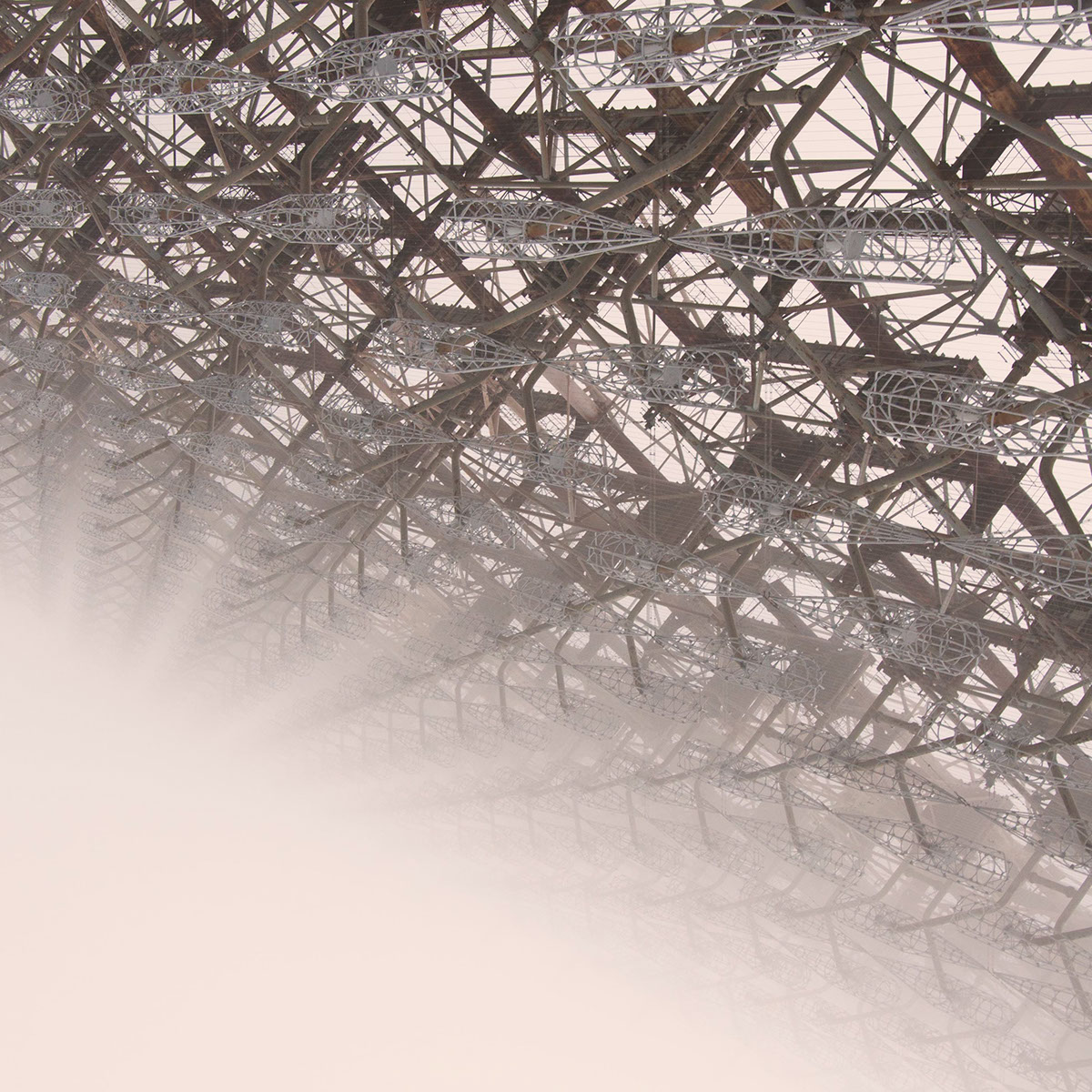
It looks like something out of a science fiction movie– close– it’s inside the Chernobyl exclusion zone. A former top secret military object used by the Soviet Union, the mysterious giant antenna system called the Duga-3, was the origin of an extremely powerful but anonymous signal between 1976 to 1989. The sharp, tapping signal came without warning, disrupting broadcasts and communications worldwide. Speculation suggested it was a form of Soviet mind control and still to this day, the full extent of the nature of its use during the Cold War, remains unanswered.
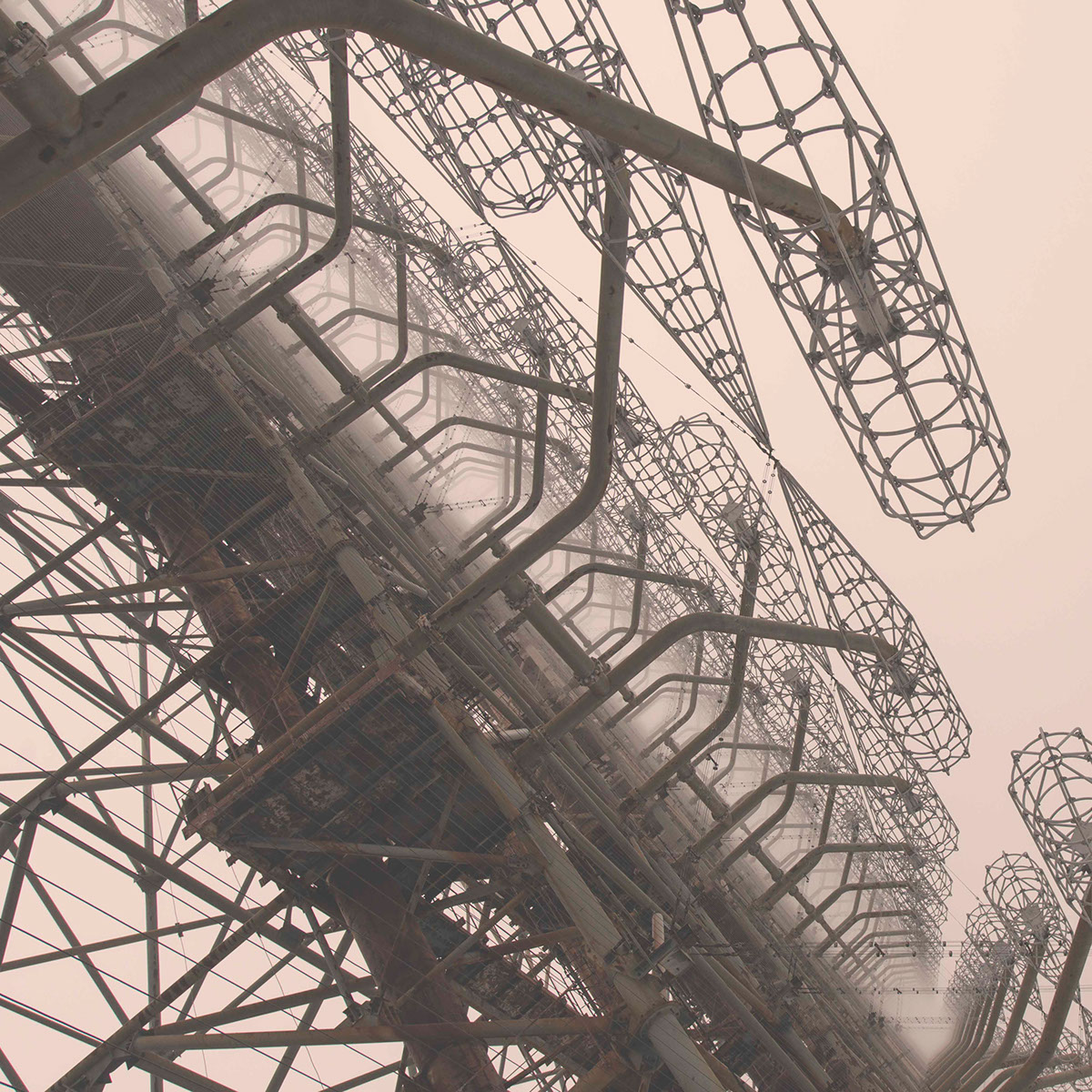
In these stunning photographs of Duga-3, Norwegian explorer Øystein Sture Aspelund climbed the structure in surreal weather conditions that highlight its twisted beauty. The thick fog isolates the array of abandoned conical cages, ladder lines and suspended platforms which overlook the surrounding forest and an exploded nuclear power plant in the distance.

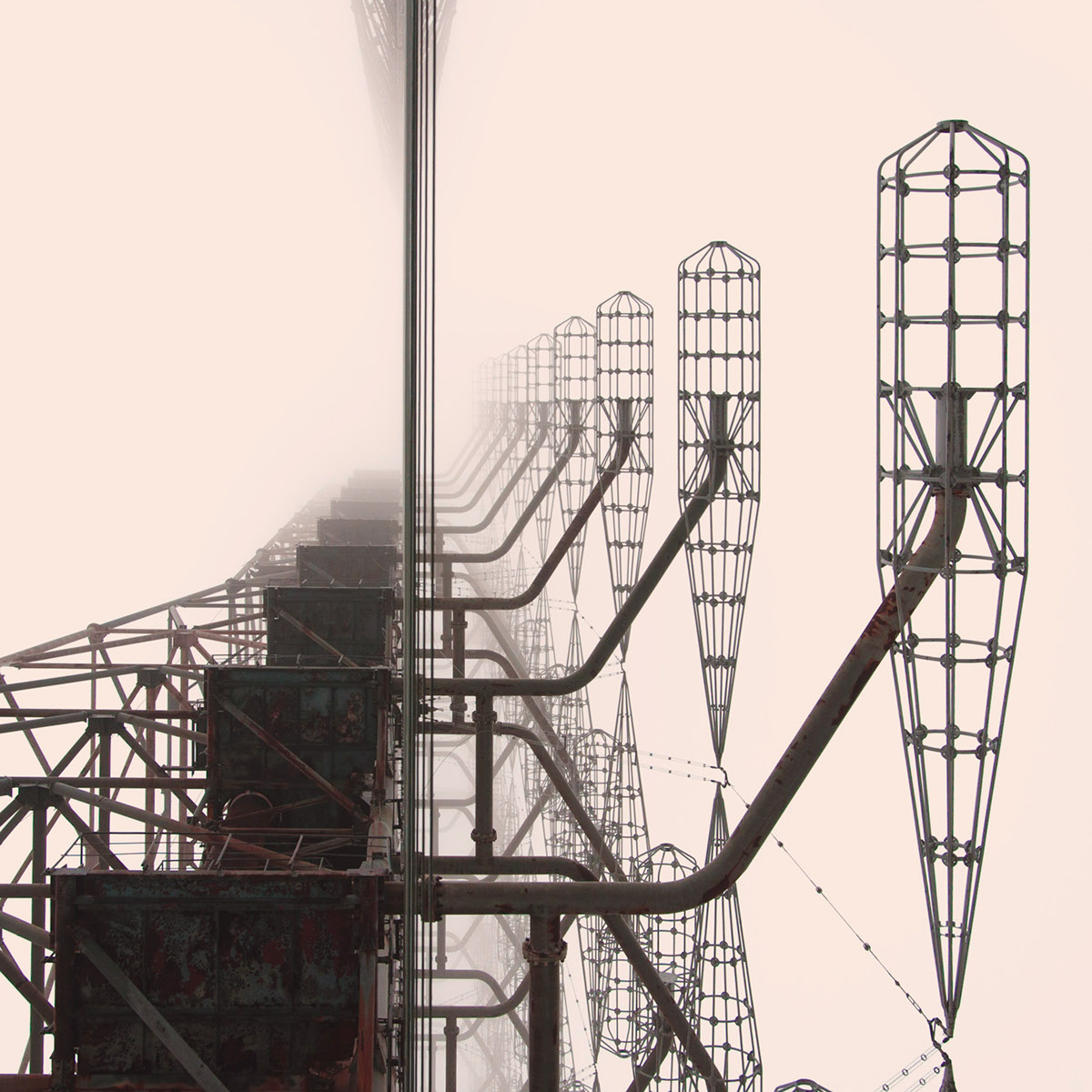

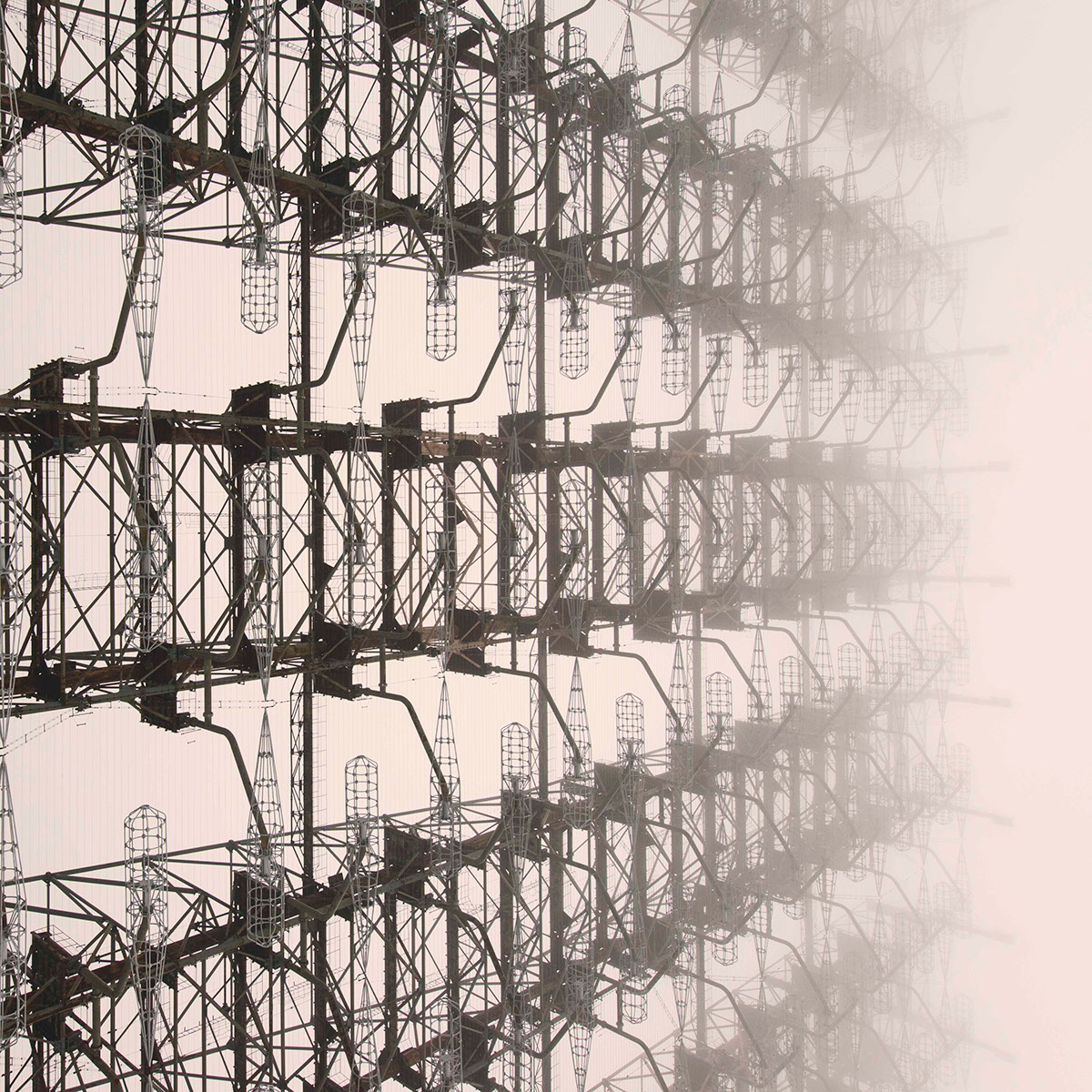
Photographs by Øystein Sture Aspelund
When a powerful new radio signal was detected in 1976, it was caught simultaneously worldwide by radio enthusiasts and legitimate broadcasters alike. The distinct repetitive tapping noise was broadcast in shortwave radio bands (at a frequency power of over 10 MW in some cases) and quickly became nicknamed by listeners as “The Russian Woodpecker”.
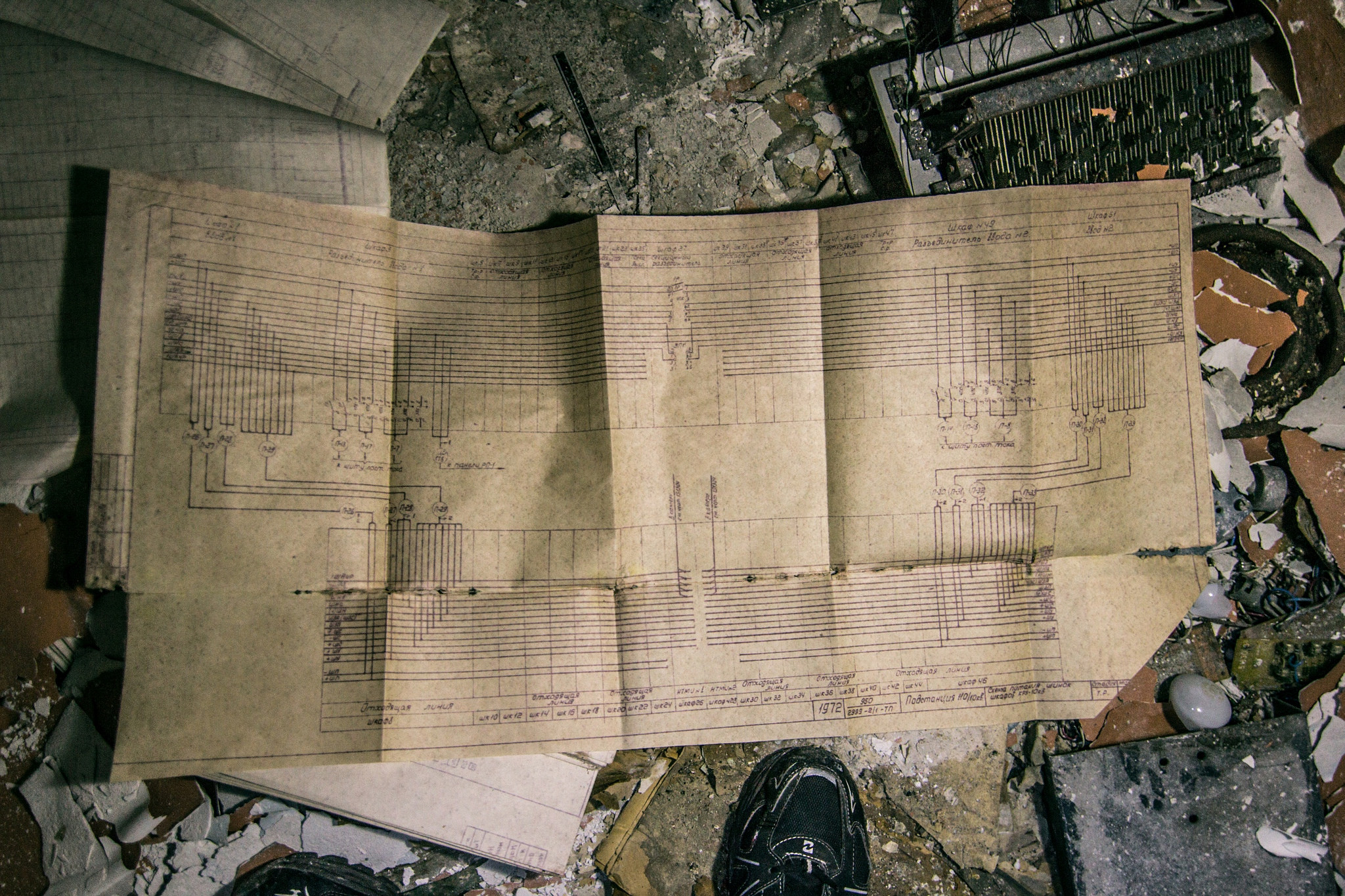
(c) Shovax
Over a 12 year period, the random and indiscriminate frequency hops got so bad that television and radio manufacturers started re-designing products that included ‘Woodpecker Blankers’ to help prevent the interference. Thousands of complaints came from countries all over the world and amateur radio operators even formed an international “Russian Woodpecker Hunting Club” dedicated to combatting interference with attempts at jamming the signal.
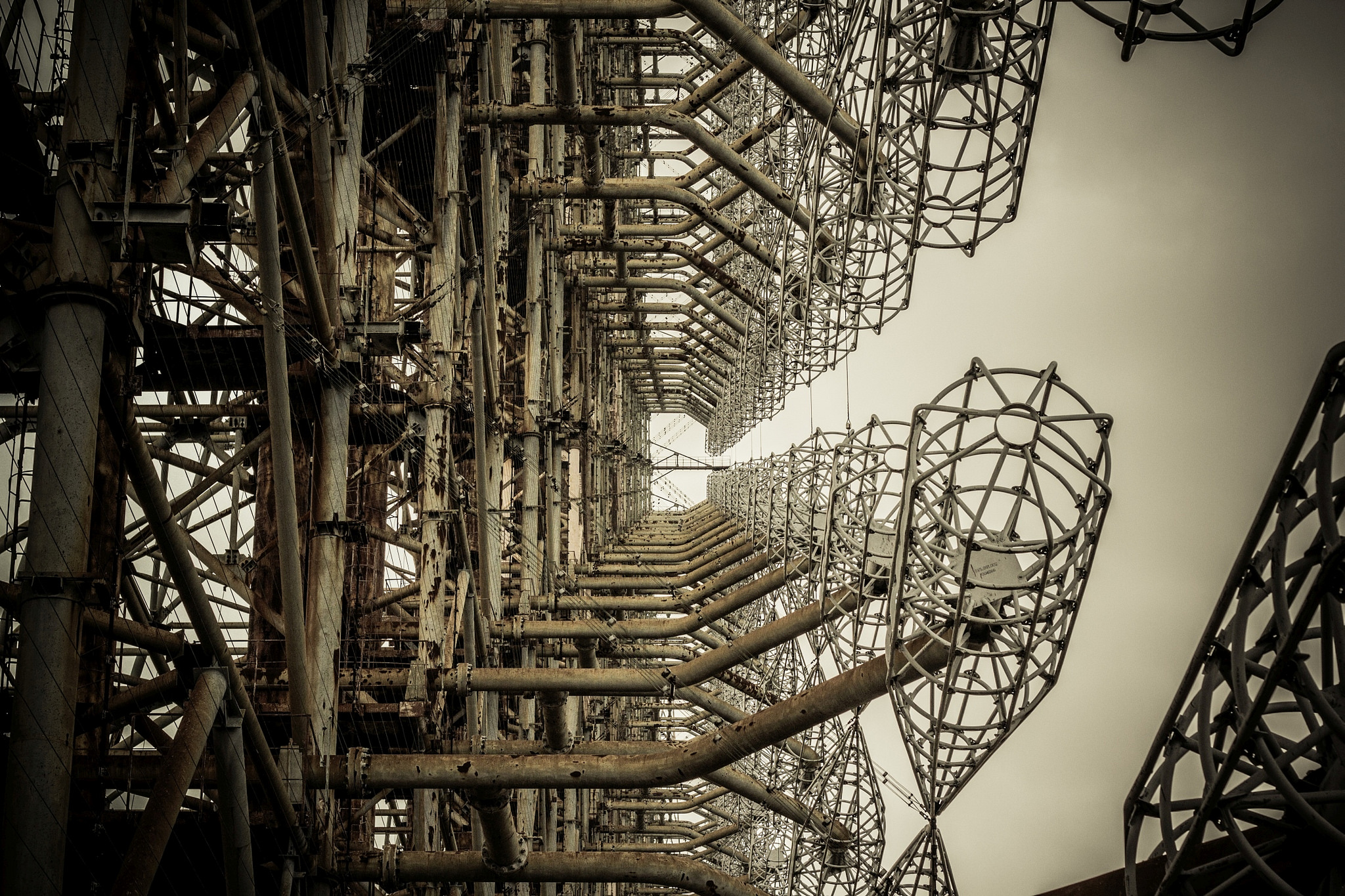
(c) Shovax
Conspiracy theories surrounding the unclaimed signal included Soviet mind control, weather control, sabotage of western broadcast and submarine communications. Because of its repetitive transmission pattern however, experts suspected early on that the Russian Woodpecker was an over-the-horizon radar system, a radar capable of providing early warning in the event of a ballistic missile launch, giving the target time to plan a response.
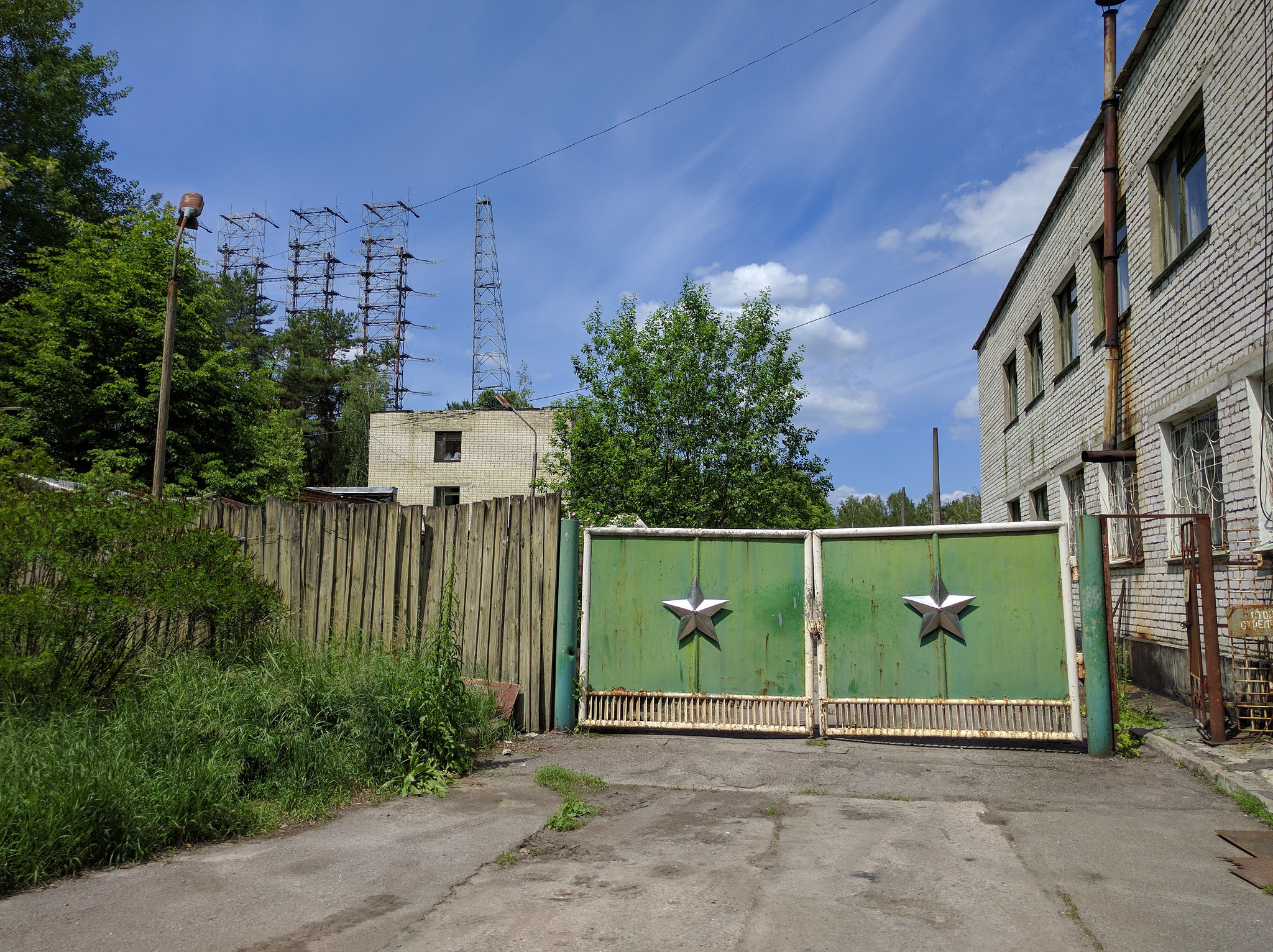
(c) Justin Van Dyke
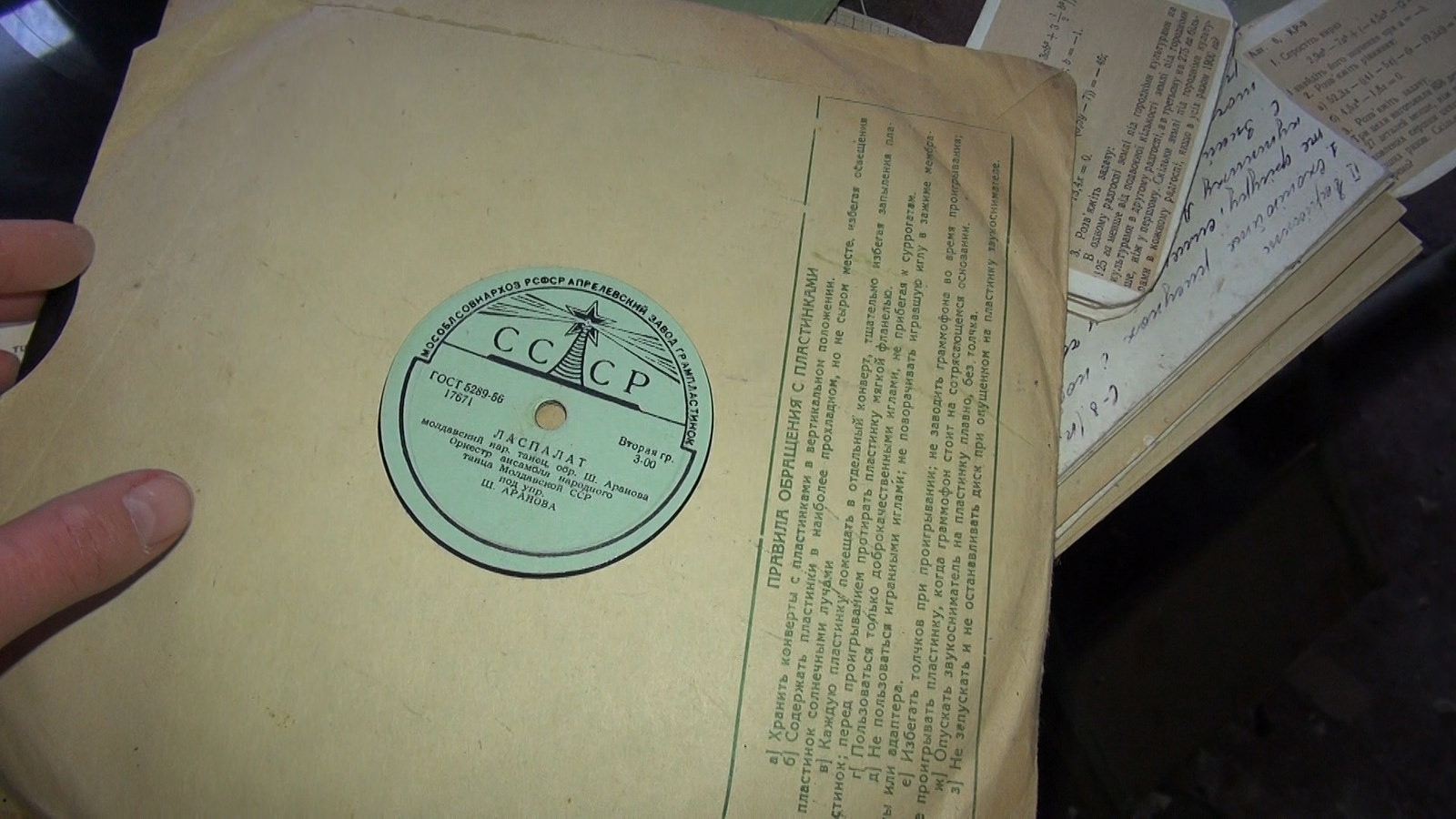
(c) bionerd23
Eventually, amateur radio hobbyists and NATO revealed the signals came from a location in present day Ukraine, then part of the USSR.
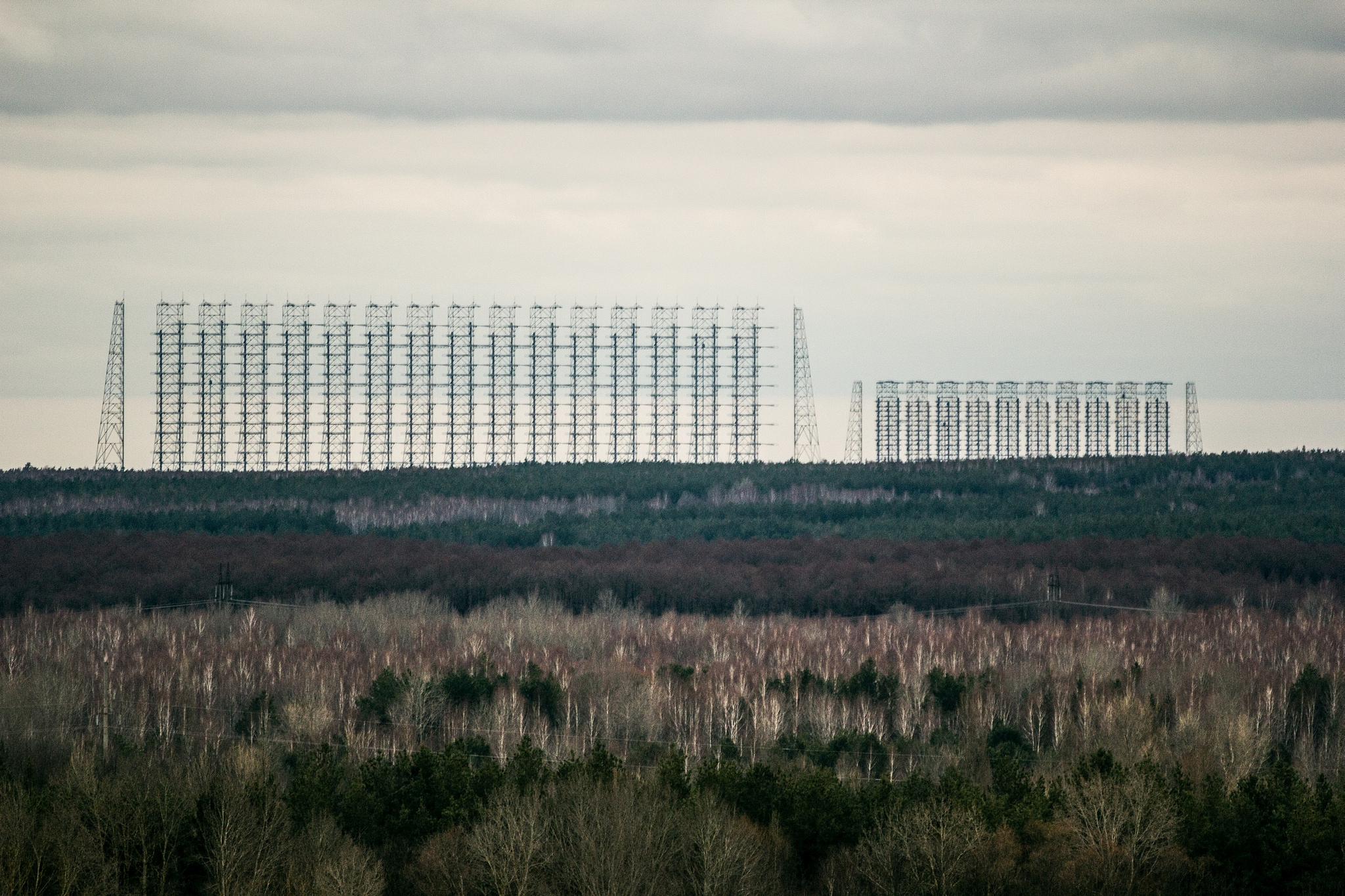
(c) Shovax
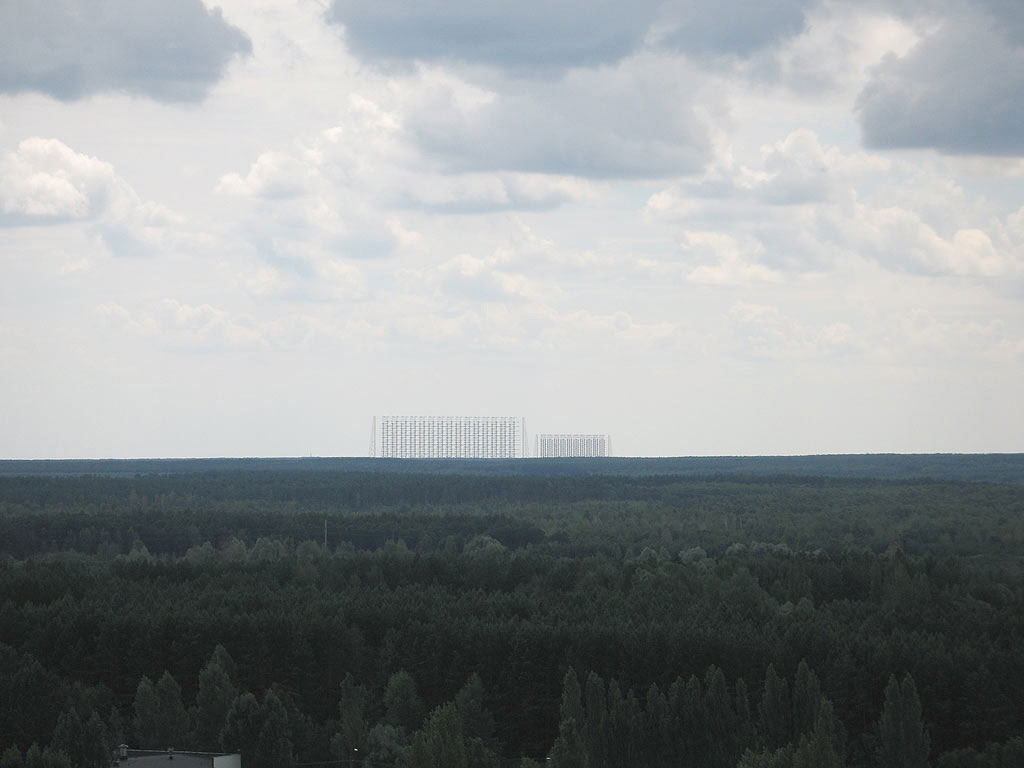
source
Found to be pointed at the United States, the primary purpose of the Durga radar system as a powerful military tool became quite obvious. Unknown to civilian observers at the time, NATO military intelligence discovered and photographed the system and named it Steel Yard.
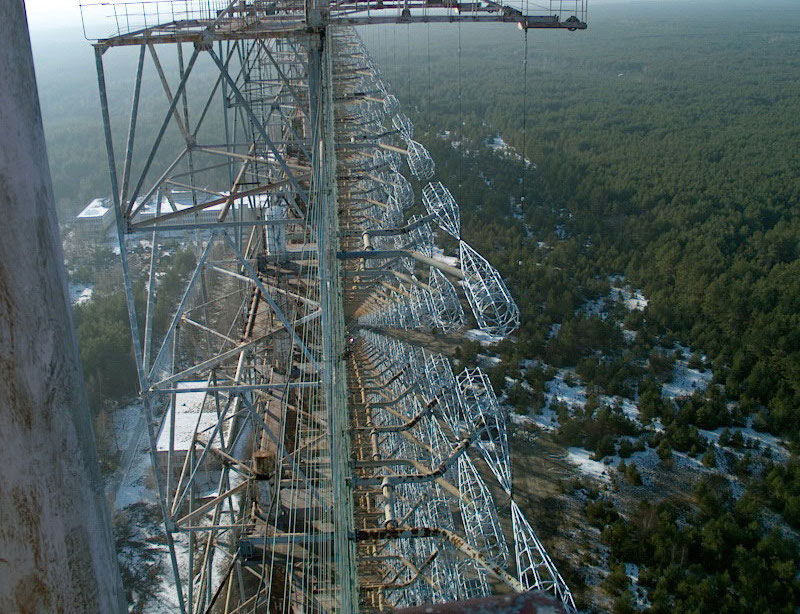
source
In 1989, the signal suddenly disappeared. It had become less frequent in the late 1980s, coinciding (not-so-coincidentally) with the end of the Cold War.
By the time the U.S Federal Communications Commission (FFC) began publishing studies on the woodpecker, the giant Duga-3 antenna had already been abandoned following the Chernobyl disaster in 1986. The tapping signal would mysteriously continue from the unmanned structure for another three years before it was finally silenced for the last time. Reasons for the eventual shutdown of the Duga-3 systems have not been made public.
Has it really been shutdown?
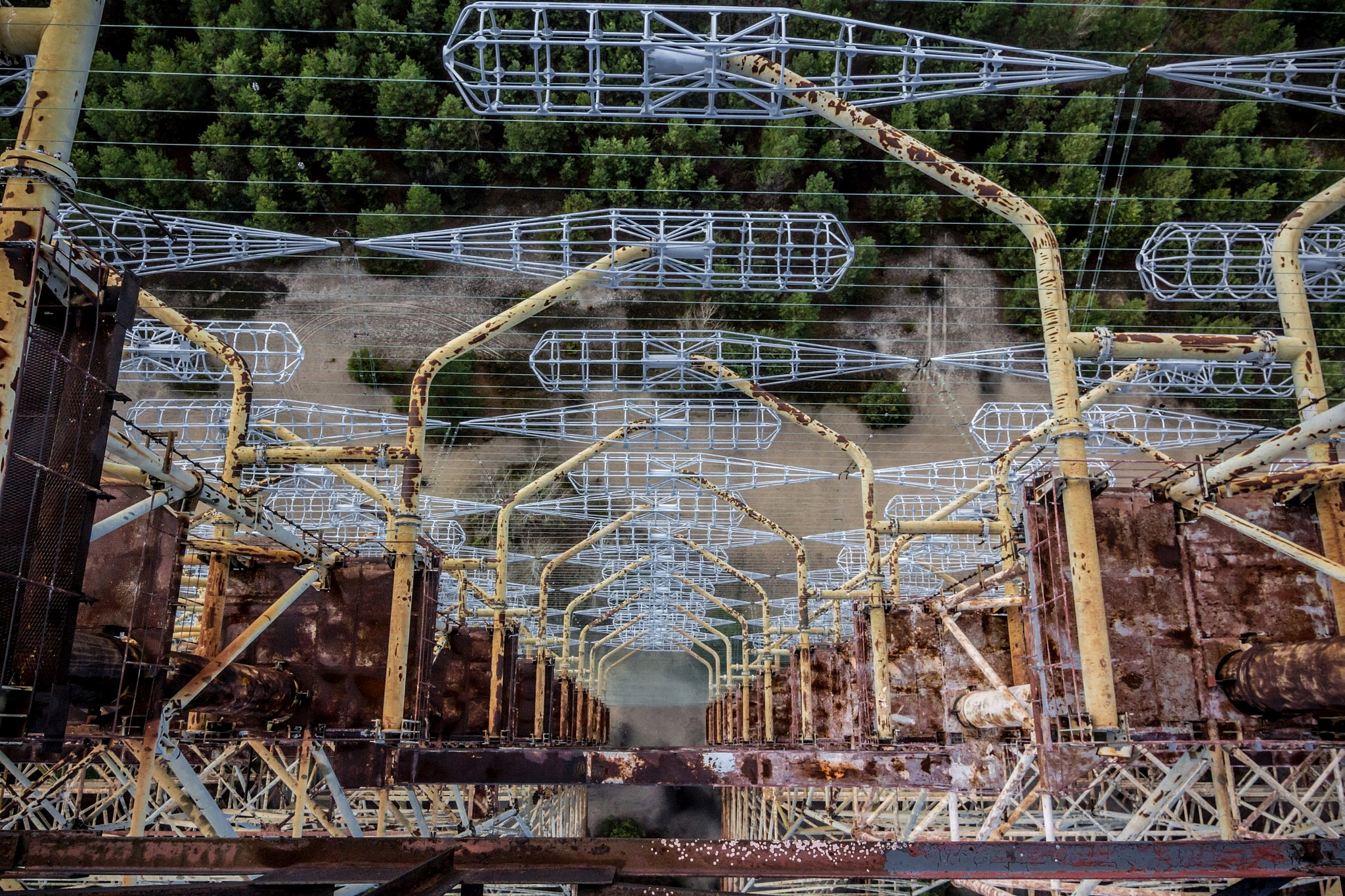
(c) Shovax
For more clues to the mystery, the Duga at Chernobyl was the focus of the 2015 documentary film, The Russian Woodpecker, by Chad Gracia. Watch the trailer below:
 The film includes interviews with the commander of the Duga Vladimir Musiets, as well as the Vice-Commander, the Head of the Data Center, and others involved in building and operating the radar. You can watch via here.
The film includes interviews with the commander of the Duga Vladimir Musiets, as well as the Vice-Commander, the Head of the Data Center, and others involved in building and operating the radar. You can watch via here.
















